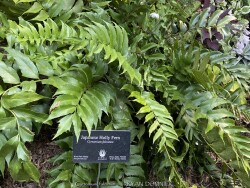

Japanese Holly Fern (Cyrtomium falcatum) is planted for its evergreen dark green foliage resemble holly branches. It is native to shaded mountain areas in forests, crevices in coastal cliffs, stream banks, rocky slopes, and other moist, stable areas in eastern Asia, India, southern Africa and even Hawaii. It is easily and quickly propagated by floating spores. It thrives in light shade to deep shade with average soil but does not tolerate poor drainage. If low temperatures hit -5 degrees F, the evergreen foliage finally dies back to the ground and re-emerges in early spring. If low temperatures hit -10 degrees F, it may kill an un-mulched plant; protect any zone 6 perennial with thick layer of mulch. Generally this plant can decline after a few years of Kansas climate but is worth a try in perfect soils in well-tended and protected shade gardens. Repeated or successive cold winters with complete foliage loss seem to be an issue with this and many evergreen zone 6/7 plants. One occasional difficult winter followed by mild winters is more tolerable. This is, however, one of the most deep shade tolerant plants available so may be worth a try. In a family member's zone 7a Stillwater OK garden, several specimens thrived for a over a decade until all were wiped out by a freak -19 degrees F cold event one winter. Amazingly, surviving spores survived to re-colonize parts of the garden.
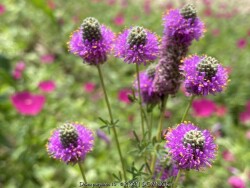

***Description for this perennial available with future update!***Great Plains Magenta Bush Clover, is also known as Dalea purpurea
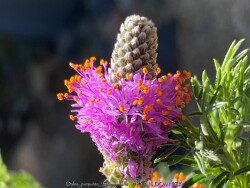

***Description for this perennial available with future update!***Great Plains Magenta Bush Clover, is also known as Dalea purpurea 'Stephanie'
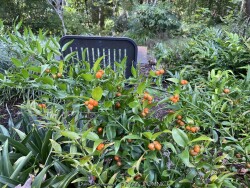

***Description for this hardy tropical available with future update!*** Danae racemosa is also known as Poet's Laurel / Danae (Tropical).
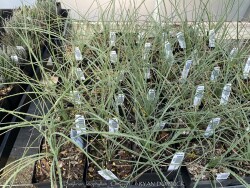

***Description for this plant available with future update!*** Dasylirion leiophyllum 'Chaves' is also known as Chaves Green Sotol (Cold Hardy)>>>>>> With extremely well drained soils and proper siting, this cactus seems to take our excess rainfall in Eastern Kansas. These and other hardy barrel cacti are perfect for a dry mounded xeriscape gardens under south facing roof overhangs where it gets no winter moisture. We are also testing this outside in our Lawrence, KS (zone 6a) crevice garden among other cold-hardy cacti, succulents, and yucca! Watch for future updates-Jan-2025
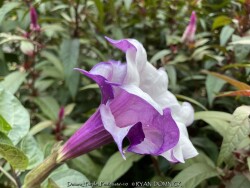

***Description for this plant available with future update!*** Datura 'Purple Petticoats' is also known as Purple Petticoats / Purple Angels Trumpet (Tropical).
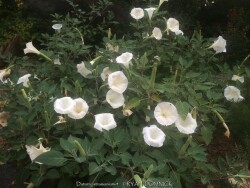

***Description for this perennial available with future update!***Perennial White Moonflower, is also known as Datura stramonium
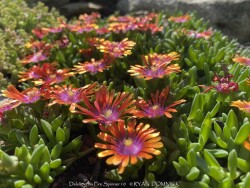

Fire Spinner Ice Plant (Delosperma 'Fire Spinner') has vibrant tri-colored flowers of orange, red and lavender that are one-of-a-kind. In Kansas, it is usually grown as an annual with outstanding color. Although very cold hardy, it cannot tolerate the combination of cold wet winters and occasionally dies even in summer from fungal diseases during hot humid weather. It could be an an evergreen groundcover under a South or West facing roof overhang against a house. Fire Spinner ice plant is sometimes grown as a hanging basket.
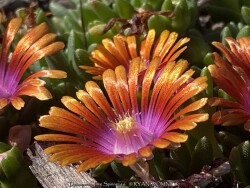

Fire Spinner Ice Plant (Delosperma 'Fire Spinner') has vibrant tri-colored flowers of orange, red and lavender that are one-of-a-kind. In Kansas, it is usually grown as an annual with outstanding color. Although very cold hardy, it cannot tolerate the combination of cold wet winters and occasionally dies even in summer from fungal diseases during hot humid weather. It could be an an evergreen groundcover under a South or West facing roof overhang against a house. Fire Spinner ice plant is sometimes grown as a hanging basket.
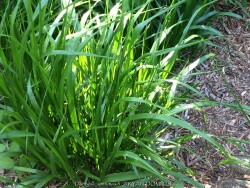

American Beakgrain (Diarrhena obovata) as a native ornamental grass found in rich woodlands in eastern North America. It features bright glossy green foliage about 2 feet tall. It is strongly vertical with little flopping until Seed heads weigh it down late in the season. With it being somewhat of a rarity to have an ornamental grass tolerate shade, American beak grass Along with inland sea oats and Korean Feather Grass help fill that niche. American beak grass prefers rich average to moist soil but will tolerate some dry shade of in rich soil. Seed heads are attractive but not persisting very long: it is an excellent source of food for birds and small mammals. Fall color is a gorgeous golden tint. Seedlings will germinate freely in the area around the mother plants. If this is not desired, simply keep the area mulched. Spreading by rhizomes will also occur after a few years. For the home garden in rich well irrigated areas, this species can be too aggressive. Use as a mass planting in any shaded area allowing extra room. However, in a difficult dry-shade garden, it will thrive, flower, and be relatively tame without much spread. Mulch will also stop self-seeding. It is one of the few plants that can survive under an established Silver Maple! Now if you need a plant to prevent soil erosion along streams, use this re-seeding to your advantage! As it reseeds easily and can expand aggressively within a couple of years, it makes a solid root mat in moist erosion-prone loam soils.
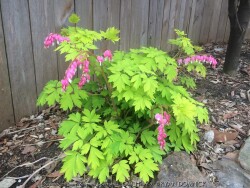

***Description for this perennial available with future update!***>>>>>Gold Heart Pink Bleeding Heart, is also known as Dicentra / Lamprocapnos spectabilis 'Gold Heart'. It can handle a little Kansas drought in in moisture-retentive soils but not dry-shade. Foliage will flatten to the ground during drought then spring back up when moisture is available again. Generally however, in non-irrigated or poor soil areas, this plant will decline and allow weeds to intermix.
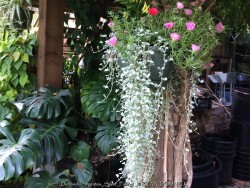

Silver Falls Dichondra / Silver Nickel Vine (Dichondra argentea 'Silver Falls') is a annual in Kansas gardens; quickly fills space providing a contrast for other flowering annuals. Vigorous, fan-shaped silver foliage grows on silver stems; very heat and drought tolerant. Very strongly trailing plant is a fun component in hanging baskets.


Looking for an adaptable native plant that's drought-tolerant, deer-resistant and colorful? This is it! Diervilla just got a lot more colorful: this tough, easy-growing shrub (Diervilla rivularis 'Kodiak Black') is a standout with its dark burgundy-black foliage. The color is especially intense in spring and autumn. The bright yellow flowers add contrast in early summer. This is a durable native that thrives in sun or shade, and is a very useful landscape plant. Now improved! Kodiak Jet Black™ diervilla is the world’s first black Diervilla that stays jet black all season long. While other diervilla tend to fade in summer, this shrub maintains its deep, striking black foliage, which creates quite the contrast with its bright yellow summer flowers. Top three reasons to grow Kodiak® Jet Black Diervilla:1.One of the best shade-tolerant shrubs (though color is more intense in sun or part shade) 2.Never without clusters of yellow flowers during the summer 3.Dramatic black-purple foliage all season with vivid red tones in autumn. Uses Notes:Naturalizing; mass plantings. Maintenance Notes: Adaptable to most soils, including dry ones. Trim in spring and apply a controlled-release fertilizer. Though it is sometimes called "bush honeysuckle," Diervilla is not invasive. In Eastern Kansas, this cultivar performs WELL with just about everything nature has to challenge it! Heat and drought are tolerated if in shade or morning sun. Cold tolerance is no problem. No disease or pest problems. Great plant for dry-shade. Native to North America. All Proven Winners® plants are legally propagated, healthy and vigorous, true to name, and tagged with color pictures and growing information.
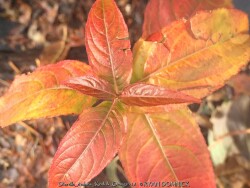

Looking for a durable native plant that will thrive in sun or shade, and is drought-tolerant? Deer-resistant, too? You've got it! This shrub (Diervilla rivularis 'Kodiak Orange') pushes fall color to the limits with its glowing orange fall foliage. It lights up the fall landscape, making it an eco friendly alternative to burning bush. Bright yellow flowers in early summer add to its appeal. A durable native plant that thrives in sun or shade, its is drought-tolerant, deer-resistant, and can even grow in dry shade. This is an excellent landscape plant that will succeed in even challenging sites. Top three reasons to grow Kodiak® Orange diervilla: 1.Tolerant of dry shade (though color is best with at least some sun) 2.Never without yellow flower clusters in the summer. 3.Orange new growth and glowing orange-red fall foliage. Uses Notes: Naturalizing; mass plantings. Maintenance Notes: Adaptable to most soils, including dry ones. Trim in spring and apply a controlled-release fertilizer. Though it is sometimes called "bush honeysuckle," Diervilla is not invasive like certain honeysuckles are. In Eastern Kansas, this cultivar performs WELL with just about everything nature has to challenge it! Heat and drought are tolerated if in shade or morning sun. Cold tolerance is no problem. No disease or pest problems. Great plant for dry-shade. Native to North America. All Proven Winners® plants are legally propagated, healthy and vigorous, true to name, and tagged with color pictures and growing information.
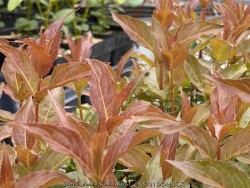

Kodiak® Red 2.0 Diervilla (Diervilla rivularis 'Kodiak Red') provides rugged beauty for the toughest spots in your landscape. Kodiak® Red diervilla is a native flowering shrub that looks great while shrugging off shade and problem soils. New growth emerges in spring with a deep burgundy tone, and turns vivid red in fall. During summer, leaves have a red edge and clusters of small yellow flowers appear all season. It's a simple but beautiful way to add low-maintenance color to parts of your yard that have been difficult to landscape. Kodiak Red 2.0 is sure to delight you with darker, longer lasting color. The blush on the new growth throughout the growing season is more reliable and the red of the fall color is intense. Top reasons to grow Kodiak Red diervilla: 1.One of the toughest landscape plants around! 2.Foliage emerges red and turns bright red in fall. 3.Yellow flowers all summer long. Diervilla needs very little care - if you'd like to prune it, do so in early spring. It does not require regular pruning, but if it starts to get a little sparse as it matures, cut it back to the ground in early spring for a fresh start. Uses Notes: The long, straight stems and neat foliage of diervilla makes it an excellent filler for cut flower arrangements. Maintenance Notes: Diervilla needs very little care - if you'd like to prune it, do so in early spring. It does not require regular pruning, but if it starts to get a little sparse as it matures, cut it back to the ground in early spring for a fresh start. Diervilla is sometimes called "bush honeysuckle," and though it is related to honeysuckle, diervilla flowers are not fragrant. However, more importantly, diervilla is NOT invasive, so it's a safe choice for planting anywhere. In Eastern Kansas, this cultivar performs WELL with just about everything nature has to challenge it! Heat and drought are tolerated if in shade or morning sun. Cold tolerance is no problem. No disease or pest problems. Great plant for dry-shade. Native to North America. All Proven Winners® plants are legally propagated, healthy and vigorous, true to name, and tagged with color pictures and growing information.
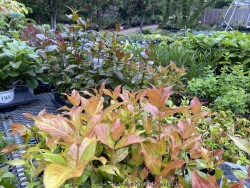

Looking for a durable native plant that will thrive in sun or shade, and is drought-tolerant? Deer-resistant, too? You've got it! This shrub (Diervilla x 'Kodiak Fresh') gives a new look to Diervilla with its bright lime-yellow foliage in summertime, always accompanied by bright yellow flowers. Like the other members of the Kodiak series, it lights up the fall landscape, making it an eco-friendly alternative to burning bush. A durable native plant that thrives in sun or shade, it is drought-tolerant, deer-resistant, and can even grow in dry shade. This is an excellent landscape plant that will succeed in even challenging sites. Top three reasons to grow Kodiak® Fresh diervilla: 1.Tolerant of dry shade (though color is best with at least some sun) 2.Never without yellow flower clusters in the summer. 3.Orangey-red new growth, persistent lime coloring, and glowing orange fall foliage. Uses Notes: Naturalizing; mass plantings. Maintenance Notes: Adaptable to most soils, including dry ones. Trim in spring and apply a controlled-release fertilizer. Though it is sometimes called "bush honeysuckle," Diervilla is not invasive like certain honeysuckles are. In Eastern Kansas, this cultivar performs WELL with just about everything nature has to challenge it! Heat and drought are tolerated if in shade or morning sun. Cold tolerance is no problem. No disease or pest problems. Great plant for dry-shade. Native to North America. All Proven Winners® plants are legally propagated, healthy and vigorous, true to name, and tagged with color pictures and growing information.


***Tree descriptions available with future update!***Native Persimmon Tree, is also known as Diospyros virginiana
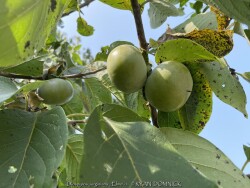

Elmo Persimmon Tree (Fruiting Cultivar), is also known as Diospyros virginiana 'Elmo' >>>>> According to Starks Bros "The Elmo American Persimmon is a hand-pollinated cross of Golden Supreme and Garretson Persimmon. It is also referred to as Claypool A-118. Chosen for its reliable crop of large fruits resistant to both pests and diseases. Elmo Persimmon is known for its heavy bearing. In Fall, enjoy harvesting large, orange, flavorful fruit with no black spots. Cross-pollination by a different variety is key to its growing and bearing success." Almost all American persimmon trees require a pollinator to bear fruit except 'Meader' and 'Yates'. Elmo Persimmons ripen in October to November with bright orange fruit. The fruit softens and sweetens once they experience frost.
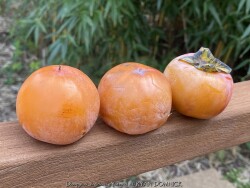

Meader Persimmon Tree (Fruiting Cultivar), is also known as Diospyros virginiana 'Meader'. >>>>> According to Starks Bros "A sweet native of Indiana. This fast-growing variety is pest- and disease-resistant. When fruit is soft and completely mature, it features a sweet, apricot-like flavor. Cold-hardy and heat-tolerant. Tree reaches 35-50' tall. Ripens in early September. Grafted. Self-pollinating. In Fall, enjoy harvesting large, orange, flavorful fruit with no black spots. Cross-pollination by a different variety is key to its growing and bearing success. Almost all American persimmon trees require a pollinator to bear fruit except 'Meader' and 'Yates'. Persimmons ripen in October to November with bright orange fruit. The fruit softens and sweetens once they experience frost. In many cases, you may still want to plant pollinating partners to increase the size of your crops, but with self-pollinating varieties doing so is optional. You'll get fruit with only one plant."
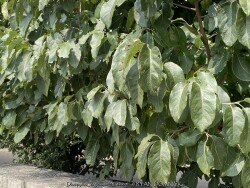

Yates Persimmon Tree (Fruiting Cultivar), is also known as Diospyros virginiana 'Yates'. >>>>> According to Starks Bros "A sweet native of Indiana. This fast-growing variety is pest- and disease-resistant. When fruit is soft and completely mature, it features a sweet, apricot-like flavor. Cold-hardy and heat-tolerant. Tree reaches 35-50' tall. Ripens in early September. Grafted. Self-pollinating. In Fall, enjoy harvesting large, orange, flavorful fruit with no black spots. Cross-pollination by a different variety is key to its growing and bearing success. Almost all American persimmon trees require a pollinator to bear fruit except 'Meader' and 'Yates'. Persimmons ripen in October to November with bright orange fruit. The fruit softens and sweetens once they experience frost. In many cases, you may still want to plant pollinating partners to increase the size of your crops, but with self-pollinating varieties doing so is optional. You'll get fruit with only one plant."
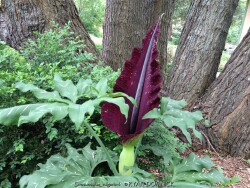

Voodoo lily (Dracunculus vulgaris) is a perennial tuber generally grown as a curiosity for its interesting foliage. The single leaf consists of a stalk (petiole) with mottled pinkish-gray and olive green coloration. The single intricate leaf has horizontal sections giving it a tropical umbrella-like effect. Larger tubers (about the size of a grapefruit or larger) may produce a single "flower" in spring before the foliage appears. The "flower" is actually a large shiny purple to maroon ruffled spathe. When in bloom it produces an odor like a dead animal for 1 day. This is intended to attract the carrion flies that are its natural pollinators. It is possible to overwinter these in the ground in Kansas by placing a 6-12" mound of mulch over deeply planted tubers. New growth will usually be delayed until June but quickly regains full height and will get bigger each year; buried tubers are hardy to zone 6a. They can also be grown as a flowering summer patio plant. If growing as a potted plant and trying to overwinter, allowing the foliage to frost is ok, it will not kill the root system. However, do not allow the pot with rootball to freeze solid or go below 20 degrees for more than a few hours; move into a cold garage or basement over the winter with no watering. Cut back and allow to go dormant and place entire pot back out in April or May with a time-release fertilizer.
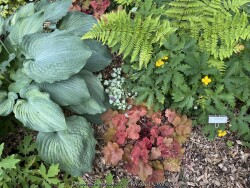

***Description for this perennial available with future update!***Autumn Shield Fern, is also known as Dryopteris erythrosora
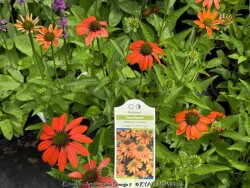

***Description for this perennial available with future update!*** Echinacea 'Artisan Soft Orange' is also known as Artisan Soft Orange Coneflower (Seed-grown) >>>>>>> Echinacea purpurea is an herbaceous perennial native to parts of eastern and midwestern United States most common in Missouri and Arkansas. Its habitats include dry open woods, prairies and barrens. Echinacea are native to North America, featuring sunflower-like flowers with a dark center and colorful petals. Colors on native plants include purple, magenta, white, yellow. Intensive breeding efforts to fish out recessive genes have brought bright orange and red into the picture. Flowers occur in early to mid summer often continuing into fall especially if dead-headed. Its individual flowers (florets) within the flower head are two-toned, having both male and female organs in each flower. (hermaphroditic) Bees and butterflies including the monarch are common pollinators. The dead flowers are attractive to some for winter interest but for those wanting a tidy your garden, they can be trimmed early. Leaving some dried seed heads will be beneficial for wildlife and provide winter food for finches and other birds. Best growth generally occurs in full to part sun with well drained soils with low to average moisture. In Eastern Kansas, typically our 40 inches of rainfall is sufficient without extra water. Coneflower can also handle short one to two day flooding events and are sometimes used along the higher perimeter of rain gardens to bring in pollinators. Coneflower mixes well with many other types of plants ranging from other native plants to evergreens to hardy tropicals. Rabbits can be a problem young immature plants. A popular method of control is covering the plant with an upside down bowl-shaped chicken wire cage for the first year to allow basil foliage to establish well. You can quickly make these yourself with a low cost roll of chicken wire. Mature plants especially in groups with other mature landscaping generally do not have rabbit problems. Flowers are also popular in the florist industry as cut flowers or in the cottage garden. The genus echinacea has undergone intense breeding with the introduction of hundreds of new cultivars in the last 10 years.
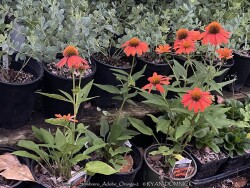

***Description for this perennial available with future update!*** Echinacea 'Sombrero Adobe Orange' is also known as Sombrero Adobe Orange Coneflower >>>>>>>>>>>> Echinacea purpurea is an herbaceous perennial native to parts of eastern and midwestern United States most common in Missouri and Arkansas. Its habitats include dry open woods, prairies and barrens. Echinacea are native to North America, featuring sunflower-like flowers with a dark center and colorful petals. Colors on native plants include purple, magenta, white, yellow. Intensive breeding efforts to fish out recessive genes have brought bright orange and red into the picture. Flowers occur in early to mid summer often continuing into fall especially if dead-headed. Its individual flowers (florets) within the flower head are two-toned, having both male and female organs in each flower. (hermaphroditic) Bees and butterflies including the monarch are common pollinators. The dead flowers are attractive to some for winter interest but for those wanting a tidy your garden, they can be trimmed early. Leaving some dried seed heads will be beneficial for wildlife and provide winter food for finches and other birds. Best growth generally occurs in full to part sun with well drained soils with low to average moisture. In Eastern Kansas, typically our 40 inches of rainfall is sufficient without extra water. Coneflower can also handle short one to two day flooding events and are sometimes used along the higher perimeter of rain gardens to bring in pollinators. Coneflower mixes well with many other types of plants ranging from other native plants to evergreens to hardy tropicals. Rabbits can be a problem young immature plants. A popular method of control is covering the plant with an upside down bowl-shaped chicken wire cage for the first year to allow basil foliage to establish well. You can quickly make these yourself with a low cost roll of chicken wire. Mature plants especially in groups with other mature landscaping generally do not have rabbit problems. Flowers are also popular in the florist industry as cut flowers or in the cottage garden. The genus echinacea has undergone intense breeding with the introduction of hundreds of new cultivars in the last 10 years.
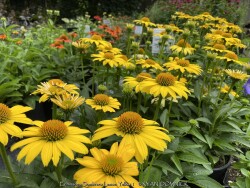

***Description for this perennial available with future update!*** Echinacea 'Sombrero Lemon Yellow' is also known as Sombrero Lemon Yellow Coneflower >>>>>>>>>>>> Echinacea purpurea is an herbaceous perennial native to parts of eastern and midwestern United States most common in Missouri and Arkansas. Its habitats include dry open woods, prairies and barrens. Echinacea are native to North America, featuring sunflower-like flowers with a dark center and colorful petals. Colors on native plants include purple, magenta, white, yellow. Intensive breeding efforts to fish out recessive genes have brought bright orange and red into the picture. Flowers occur in early to mid summer often continuing into fall especially if dead-headed. Its individual flowers (florets) within the flower head are two-toned, having both male and female organs in each flower. (hermaphroditic) Bees and butterflies including the monarch are common pollinators. The dead flowers are attractive to some for winter interest but for those wanting a tidy your garden, they can be trimmed early. Leaving some dried seed heads will be beneficial for wildlife and provide winter food for finches and other birds. Best growth generally occurs in full to part sun with well drained soils with low to average moisture. In Eastern Kansas, typically our 40 inches of rainfall is sufficient without extra water. Coneflower can also handle short one to two day flooding events and are sometimes used along the higher perimeter of rain gardens to bring in pollinators. Coneflower mixes well with many other types of plants ranging from other native plants to evergreens to hardy tropicals. Rabbits can be a problem young immature plants. A popular method of control is covering the plant with an upside down bowl-shaped chicken wire cage for the first year to allow basil foliage to establish well. You can quickly make these yourself with a low cost roll of chicken wire. Mature plants especially in groups with other mature landscaping generally do not have rabbit problems. Flowers are also popular in the florist industry as cut flowers or in the cottage garden. The genus echinacea has undergone intense breeding with the introduction of hundreds of new cultivars in the last 10 years.
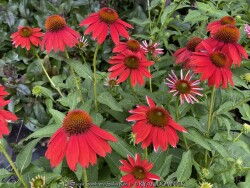

***Description for this perennial available with future update!*** Echinacea 'Sombrero Salsa Red' is also known as Sombrero Salsa Red Coneflower >>>>>>>>>>>> Echinacea purpurea is an herbaceous perennial native to parts of eastern and midwestern United States most common in Missouri and Arkansas. Its habitats include dry open woods, prairies and barrens. Echinacea are native to North America, featuring sunflower-like flowers with a dark center and colorful petals. Colors on native plants include purple, magenta, white, yellow. Intensive breeding efforts to fish out recessive genes have brought bright orange and red into the picture. Flowers occur in early to mid summer often continuing into fall especially if dead-headed. Its individual flowers (florets) within the flower head are two-toned, having both male and female organs in each flower. (hermaphroditic) Bees and butterflies including the monarch are common pollinators. The dead flowers are attractive to some for winter interest but for those wanting a tidy your garden, they can be trimmed early. Leaving some dried seed heads will be beneficial for wildlife and provide winter food for finches and other birds. Best growth generally occurs in full to part sun with well drained soils with low to average moisture. In Eastern Kansas, typically our 40 inches of rainfall is sufficient without extra water. Coneflower can also handle short one to two day flooding events and are sometimes used along the higher perimeter of rain gardens to bring in pollinators. Coneflower mixes well with many other types of plants ranging from other native plants to evergreens to hardy tropicals. Rabbits can be a problem young immature plants. A popular method of control is covering the plant with an upside down bowl-shaped chicken wire cage for the first year to allow basil foliage to establish well. You can quickly make these yourself with a low cost roll of chicken wire. Mature plants especially in groups with other mature landscaping generally do not have rabbit problems. Flowers are also popular in the florist industry as cut flowers or in the cottage garden. The genus echinacea has undergone intense breeding with the introduction of hundreds of new cultivars in the last 10 years.
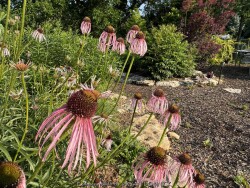

***Description for this perennial available with future update!***Pale Purple Coneflower, is also known as Echinacea pallida


***Description for this perennial available with future update!***Yellow Coneflower, is also known as Echinacea paradoxa
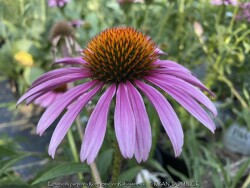

***Description for this perennial available with future update!*** Echinacea purpurea 'Ruby Star' / 'Rubinstern' is also known as Ruby Star Coneflower >>>>>>>>>>>>Echinacea purpurea is an herbaceous perennial native to parts of eastern and midwestern United States most common in Missouri and Arkansas. Its habitats include dry open woods, prairies and barrens. Echinacea are native to North America, featuring sunflower-like flowers with a dark center and colorful petals. Colors on native plants include purple, magenta, white, yellow. Intensive breeding efforts to fish out recessive genes have brought bright orange and red into the picture. Flowers occur in early to mid summer often continuing into fall especially if dead-headed. Its individual flowers (florets) within the flower head are two-toned, having both male and female organs in each flower. (hermaphroditic) Bees and butterflies including the monarch are common pollinators. The dead flowers are attractive to some for winter interest but for those wanting a tidy your garden, they can be trimmed early. Leaving some dried seed heads will be beneficial for wildlife and provide winter food for finches and other birds. Best growth generally occurs in full to part sun with well drained soils with low to average moisture. In Eastern Kansas, typically our 40 inches of rainfall is sufficient without extra water. Coneflower can also handle short one to two day flooding events and are sometimes used along the higher perimeter of rain gardens to bring in pollinators. Coneflower mixes well with many other types of plants ranging from other native plants to evergreens to hardy tropicals. Rabbits can be a problem young immature plants. A popular method of control is covering the plant with an upside down bowl-shaped chicken wire cage for the first year to allow basil foliage to establish well. You can quickly make these yourself with a low cost roll of chicken wire. Mature plants especially in groups with other mature landscaping generally do not have rabbit problems. Flowers are also popular in the florist industry as cut flowers or in the cottage garden. The genus echinacea has undergone intense breeding with the introduction of hundreds of new cultivars in the last 10 years. Sunset Coneflower / Red-Orange Coneflower (Echinacea x Sunset) features red-orange and pinkish flowers. Most orange or red types if allowed to self-seed will produce purple flowering plants.
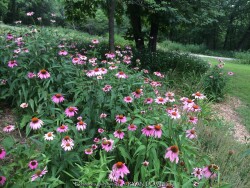

Echinacea purpurea is an herbaceous perennial native to parts of eastern and midwestern United States most common in Missouri and Arkansas. Its habitats include dry open woods, prairies and barrens. Echinacea are native to North America, featuring sunflower-like flowers with a dark center and colorful petals. Colors on native plants include purple, magenta, white, yellow. Intensive breeding efforts to fish out recessive genes have brought bright orange and red into the picture. Flowers occur in early to mid summer often continuing into fall especially if dead-headed. Its individual flowers (florets) within the flower head are two-toned, having both male and female organs in each flower. (hermaphroditic) Bees and butterflies including the monarch are common pollinators. The dead flowers are attractive to some for winter interest but for those wanting a tidy your garden, they can be trimmed early. Leaving some dried seed heads will be beneficial for wildlife and provide winter food for finches and other birds. Best growth generally occurs in full to part sun with well drained soils with low to average moisture. In Eastern Kansas, typically our 40 inches of rainfall is sufficient without extra water. Coneflower can also handle short one to two day flooding events and are sometimes used along the higher perimeter of rain gardens to bring in pollinators. Coneflower mixes well with many other types of plants ranging from other native plants to evergreens to hardy tropicals. Rabbits can be a problem young immature plants. A popular method of control is covering the plant with an upside down bowl-shaped chicken wire cage for the first year to allow basil foliage to establish well. You can quickly make these yourself with a low cost roll of chicken wire. Mature plants especially in groups with other mature landscaping generally do not have rabbit problems. Flowers are also popular in the florist industry as cut flowers or in the cottage garden. The genus echinacea has undergone intense breeding with the introduction of hundreds of new cultivars in the last 10 years. This entry included mixed species and cultivars.
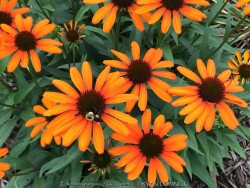

Echinacea purpurea is an herbaceous perennial native to parts of eastern and midwestern United States most common in Missouri and Arkansas. Its habitats include dry open woods, prairies and barrens. Echinacea are native to North America, featuring sunflower-like flowers with a dark center and colorful petals. Colors on native plants include purple, magenta, white, yellow. Intensive breeding efforts to fish out recessive genes have brought bright orange and red into the picture. Flowers occur in early to mid summer often continuing into fall especially if dead-headed. Its individual flowers (florets) within the flower head are two-toned, having both male and female organs in each flower. (hermaphroditic) Bees and butterflies including the monarch are common pollinators. The dead flowers are attractive to some for winter interest but for those wanting a tidy your garden, they can be trimmed early. Leaving some dried seed heads will be beneficial for wildlife and provide winter food for finches and other birds. Best growth generally occurs in full to part sun with well drained soils with low to average moisture. In Eastern Kansas, typically our 40 inches of rainfall is sufficient without extra water. Coneflower can also handle short one to two day flooding events and are sometimes used along the higher perimeter of rain gardens to bring in pollinators. Coneflower mixes well with many other types of plants ranging from other native plants to evergreens to hardy tropicals. Rabbits can be a problem young immature plants. A popular method of control is covering the plant with an upside down bowl-shaped chicken wire cage for the first year to allow basil foliage to establish well. You can quickly make these yourself with a low cost roll of chicken wire. Mature plants especially in groups with other mature landscaping generally do not have rabbit problems. Flowers are also popular in the florist industry as cut flowers or in the cottage garden. The genus echinacea has undergone intense breeding with the introduction of hundreds of new cultivars in the last 10 years. Several cultivars featuring the break-thru orange color. Older varieties were less vigorous but new varieties are much improved. Most orange or red types if allowed to self-seed will produce purple flowering plants.
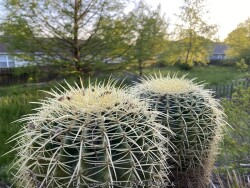

Golden Barrel Cacti (Echinocactus grusonii) are known for their bright yellow spines. Native to deserts in Mexico, it's usually grown as a patio or house plant in Kansas. In the wild, established golden barrel cacti are hardy to 13 degrees F for short periods of time. Grow in full sun with no extra watering except that which comes from rainfall. Repotting may or may not be needed depending on how large you want the plant to grow; plants can continue to grow taller and tolerate extremely root-bound pots but may need wind bracing. If repotting, make sure to use a sharp draining low organic cactus mix with plenty of sand and perlite. Potted plants are hardy to at least 25 degrees F for a short time if kept dry so you are ok if you miss the first light frost. Do not allow the pot with rootball to freeze solid though. Before extreme cold occurs, move to a bright interior window over the winter with no watering and keep above freezing. As a winter house plant, it will look presentable all winter long with just no waterings.(also to prevent soft winter growth) As a permanent house plant, provide bright light and allow the soil to dry between waterings for many years of carefree enjoyment. Plants grown permanently indoors may begin to elongate stretching for light and lose their spine color. It can be hard to reproduce the intense UV sunlight they need so moving outside for the summer is best. Generally if moving outside for the summer, allow 1-2 weeks of part shade or morning sun before placing in full sun. Plants with time to acclimate will thrive in full sun but be careful not to rush it or sunburning will occur. Potted plants are very low maintenance. I have never seen any insect problems on this plant.


This beautiful small barrel type cactus (Echinocactus texensis) features stout spines, bluish green skin, and pink/magenta flowers with red throats and bright red fruits. Being indigenous to Texas, New Mexico and even parts of Oklahoma, it can handle more extreme cold and moisture than most other cacti. Called the "Horse Crippler Cactus" for obvious reasons, you wouldn't want to step on this. With extremely well drained soils and proper siting, this cactus seems to take our excess rainfall in Eastern Kansas. These and other hardy barrel cacti are perfect for a dry mounded xeriscape gardens under south facing roof overhangs where it gets no winter moisture. We are also testing this outside in our Lawrence, KS (zone 6a) crevice garden among other cold-hardy cacti, succulents, and yucca! Survival was successful during the more mild 2022-2023 winter with lows down to -5F, along with the harsh week of 2024 January weather that dipped down to -11F with a daytime high of -1F on one of those days. We will keep you posted after 2024)
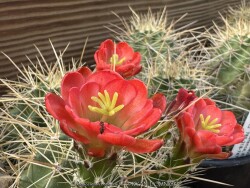

***Description for this plant available with future update!*** Echinocereus coccineus is also known as Colorado Hedgehog / Claret Cup Cactus (Cold Hardy)>>>>>> With extremely well drained soils and proper siting, this cactus seems to take our excess rainfall in Eastern Kansas. These and other hardy barrel cacti are perfect for a dry mounded xeriscape gardens under south facing roof overhangs where it gets no winter moisture. We are also testing this outside in our Lawrence, KS (zone 6a) crevice garden among other cold-hardy cacti, succulents, and yucca! Watch for future updates-Jan-2025
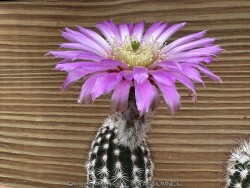

***Description for this plant available with future update!*** Echinocereus reichenbachii is also known as Oklahoma Hedgehog / Lace Cactus (Cold Hardy)>>>>>> With extremely well drained soils and proper siting, this cactus seems to take our excess rainfall in Eastern Kansas. These and other hardy barrel cacti are perfect for a dry mounded xeriscape gardens under south facing roof overhangs where it gets no winter moisture. We are also testing this outside in our Lawrence, KS (zone 6a) crevice garden among other cold-hardy cacti, succulents, and yucca! Watch for future updates-Jan-2025


***Description for this plant available with future update!*** Echinocereus rigidissimus v. rubispinus is also known as Rainbow Hedgehog Cactus (Cold Hardy)>>>>>> With extremely well drained soils and proper siting, this cactus seems to take our excess rainfall in Eastern Kansas. These and other hardy barrel cacti are perfect for a dry mounded xeriscape gardens under south facing roof overhangs where it gets no winter moisture. We are also testing this outside in our Lawrence, KS (zone 6a) crevice garden among other cold-hardy cacti, succulents, and yucca! Watch for future updates-Jan-2025
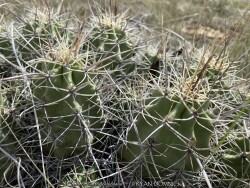

***Description for this plant available with future update!*** Echinocereus triglochidiatus is also known as Colorado Hedgehog / Claret Cup Cactus (Cold Hardy)>>>>>> With extremely well drained soils and proper siting, this cactus seems to take our excess rainfall in Eastern Kansas. These and other hardy barrel cacti are perfect for a dry mounded xeriscape gardens under south facing roof overhangs where it gets no winter moisture. We are also testing this outside in our Lawrence, KS (zone 6a) crevice garden among other cold-hardy cacti, succulents, and yucca! Watch for future updates-Jan-2025
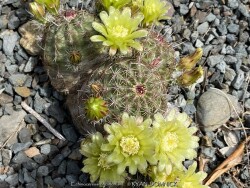

***Description for this plant available with future update!*** Echinocereus viridiflorus is also known as Green Flowered Hegdehog Cactus (Cold Hardy)>>>>>> With extremely well drained soils and proper siting, this cactus seems to take our excess rainfall in Eastern Kansas. These and other hardy barrel cacti are perfect for a dry mounded xeriscape gardens under south facing roof overhangs where it gets no winter moisture. We are also testing this outside in our Lawrence, KS (zone 6a) crevice garden among other cold-hardy cacti, succulents, and yucca! Watch for future updates-Jan-2025


Grown for its beautiful bluish-green skin and relatively few spines, San Pedro Cactus (Echinopsis / Trichocereus pachanoi) is usually a patio or house plant in Kansas. Because it grows naturally in the Peruvian Andes Mountains at high altitude and with high rainfall, it can withstand temperatures far below that of many other cacti. In the wild, this species is hardy to 15-20 degrees F for short periods of time. Grow in full sun with optional extra watering including that which comes from rainfall. Repotting may or may not be needed depending on how large you want the plant to grow; plants can continue to grow taller and tolerate extremely root-bound pots but may need wind bracing. If repotting, make sure to use a sharp draining medium organic cactus mix with plenty of sand and perlite. To play is safe, potted plants are best moved in before night temperatures get below 45 degrees F. It is important to avoid the combination of wet and cold. Before extreme cold occurs, move to a bright interior window over the winter with no watering and keep above freezing. As a winter house plant, it will look presentable all winter long with just no waterings.(also to prevent lanky winter growth) As a permanent house plant, provide bright light and allow the soil to dry between waterings for many years of carefree enjoyment. Plants grown permanently indoors may begin to elongate stretching for light producing weak new growth. It can be hard to reproduce the intense UV sunlight they need so moving outside for the summer is best. Generally if moving outside for the summer, allow 1-2 weeks of part shade or morning sun before placing in full sun. Plants with time to acclimate will thrive in full sun but be careful not to rush it or sunburning will occur. Potted plants are very low maintenance. I have never seen any insect problems on this plant. The San Pedro cactus contains a number of alkaloids, including the well-studied chemical mescaline. In the US, it is currently legal to cultivate the San Pedro cactus for gardening and ornamental purposes, but not for consumption.
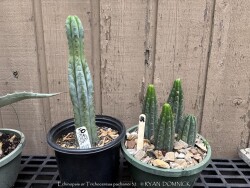

Grown for its beautiful bluish-green skin and relatively few spines, San Pedro Cactus (Echinopsis / Trichocereus pachanoi) is usually a patio or house plant in Kansas. Because it grows naturally in the Peruvian Andes Mountains at high altitude and with high rainfall, it can withstand temperatures far below that of many other cacti. In the wild, this species is hardy to 15-20 degrees F for short periods of time. Grow in full sun with optional extra watering including that which comes from rainfall. Repotting may or may not be needed depending on how large you want the plant to grow; plants can continue to grow taller and tolerate extremely root-bound pots but may need wind bracing. If repotting, make sure to use a sharp draining medium organic cactus mix with plenty of sand and perlite. To play is safe, potted plants are best moved in before night temperatures get below 45 degrees F. It is important to avoid the combination of wet and cold. Before extreme cold occurs, move to a bright interior window over the winter with no watering and keep above freezing. As a winter house plant, it will look presentable all winter long with just no waterings.(also to prevent lanky winter growth) As a permanent house plant, provide bright light and allow the soil to dry between waterings for many years of carefree enjoyment. Plants grown permanently indoors may begin to elongate stretching for light producing weak new growth. It can be hard to reproduce the intense UV sunlight they need so moving outside for the summer is best. Generally if moving outside for the summer, allow 1-2 weeks of part shade or morning sun before placing in full sun. Plants with time to acclimate will thrive in full sun but be careful not to rush it or sunburning will occur. Potted plants are very low maintenance. I have never seen any insect problems on this plant. The San Pedro cactus contains a number of alkaloids, including the well-studied chemical mescaline. In the US, it is currently legal to cultivate the San Pedro cactus for gardening and ornamental purposes, but not for consumption.


Grown for its beautiful bluish-green skin and relatively few spines, San Pedro Cactus (Echinopsis / Trichocereus pachanoi) is usually a patio or house plant in Kansas. Because it grows naturally in the Peruvian Andes Mountains at high altitude and with high rainfall, it can withstand temperatures far below that of many other cacti. In the wild, this species is hardy to 15-20 degrees F for short periods of time. Grow in full sun with optional extra watering including that which comes from rainfall. Repotting may or may not be needed depending on how large you want the plant to grow; plants can continue to grow taller and tolerate extremely root-bound pots but may need wind bracing. If repotting, make sure to use a sharp draining medium organic cactus mix with plenty of sand and perlite. To play is safe, potted plants are best moved in before night temperatures get below 45 degrees F. It is important to avoid the combination of wet and cold. Before extreme cold occurs, move to a bright interior window over the winter with no watering and keep above freezing. As a winter house plant, it will look presentable all winter long with just no waterings.(also to prevent lanky winter growth) As a permanent house plant, provide bright light and allow the soil to dry between waterings for many years of carefree enjoyment. Plants grown permanently indoors may begin to elongate stretching for light producing weak new growth. It can be hard to reproduce the intense UV sunlight they need so moving outside for the summer is best. Generally if moving outside for the summer, allow 1-2 weeks of part shade or morning sun before placing in full sun. Plants with time to acclimate will thrive in full sun but be careful not to rush it or sunburning will occur. Potted plants are very low maintenance. I have never seen any insect problems on this plant. The San Pedro cactus contains a number of alkaloids, including the well-studied chemical mescaline. In the US, it is currently legal to cultivate the San Pedro cactus for gardening and ornamental purposes, but not for consumption.
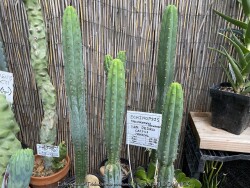

Grown for its beautiful bluish-green skin and relatively few spines, San Pedro Cactus (Echinopsis / Trichocereus pachanoi) is usually a patio or house plant in Kansas. Because it grows naturally in the Peruvian Andes Mountains at high altitude and with high rainfall, it can withstand temperatures far below that of many other cacti. In the wild, this species is hardy to 15-20 degrees F for short periods of time. Grow in full sun with optional extra watering including that which comes from rainfall. Repotting may or may not be needed depending on how large you want the plant to grow; plants can continue to grow taller and tolerate extremely root-bound pots but may need wind bracing. If repotting, make sure to use a sharp draining medium organic cactus mix with plenty of sand and perlite. To play is safe, potted plants are best moved in before night temperatures get below 45 degrees F. It is important to avoid the combination of wet and cold. Before extreme cold occurs, move to a bright interior window over the winter with no watering and keep above freezing. As a winter house plant, it will look presentable all winter long with just no waterings.(also to prevent lanky winter growth) As a permanent house plant, provide bright light and allow the soil to dry between waterings for many years of carefree enjoyment. Plants grown permanently indoors may begin to elongate stretching for light producing weak new growth. It can be hard to reproduce the intense UV sunlight they need so moving outside for the summer is best. Generally if moving outside for the summer, allow 1-2 weeks of part shade or morning sun before placing in full sun. Plants with time to acclimate will thrive in full sun but be careful not to rush it or sunburning will occur. Potted plants are very low maintenance. I have never seen any insect problems on this plant. The San Pedro cactus contains a number of alkaloids, including the well-studied chemical mescaline. In the US, it is currently legal to cultivate the San Pedro cactus for gardening and ornamental purposes, but not for consumption.
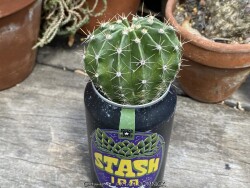

Sea Urchin Cactus (Echinopsis sp.) is a large genus of cacti native to South America, sometimes known as hedgehog cactus. Grown for its beautiful tubular flowers, it's usually a patio or house plant in Kansas. In the wild, some species are hardy to 15-20 degrees F for short periods of time. Grow in full sun with no extra watering except that which comes from rainfall. Repotting may or may not be needed depending on how large you want the plant to grow; plants can continue to grow taller and tolerate extremely root-bound pots but may need wind bracing. If repotting, make sure to use a sharp draining low organic cactus mix with plenty of sand and perlite. To play is safe, potted plants are best moved in before night temperatures get below 45 degrees F. It is important to avoid the combination of wet and cold. Before extreme cold occurs, move to a bright interior window over the winter with no watering and keep above freezing. As a winter house plant, it will look presentable all winter long with just no waterings. As a permanent house plant, provide bright light and allow the soil to dry between waterings for many years of carefree enjoyment. Plants grown permanently indoors may begin to elongate stretching for light and lose their spine color. It can be hard to reproduce the intense UV sunlight they need so moving outside for the summer is best. Generally if moving outside for the summer, allow 1-2 weeks of part shade or morning sun before placing in full sun. Plants with time to acclimate will thrive in full sun but be careful not to rush it or sunburning will occur. Potted plants are very low maintenance. I have never seen any insect problems on this plant.
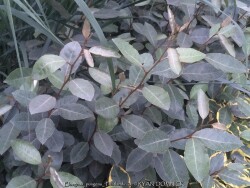

***Shrub descriptions available with future update!*** Elaegnus pungens 'Fruitlandii' is also known as Silverberry Elaegnus >>>>>>>>>>>>Repeated or successive cold winters with complete foliage loss seem to be an issue with this and many evergreen zone 6/7 plants. One occasional difficult winter followed by mild winters is more tolerable. This is, however, a very vigorous growing plant so generally will recover in one summer with decent watering and fertilizer.
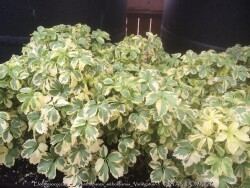

***Shrub descriptions available with future update!***Variegated Shrub Aralia, is also known as Eleutherococcus / Acanthopanax sieboldianus 'Variegatus'
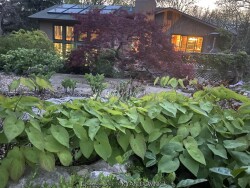

Barrenwort (Epimedium) features compact dainty mounds of green to colored weed-resistant foliage. Wispy flowers appear above emerging foliage in mid-spring. Improved breeding has resulted in many different flower colors even including orange. Semi-evergreen foliage can sometimes look bedraggled by late summer if there is too much overhead watering and humidity. Barrenwort prefers average to dry garden conditions and even thrive and dry shade. Plantings can thrive for decades if in the right spot; there is no such thing as overcrowding for Barrenwort. When planted in mass, growth is slow at first but eventually a cake-like rhizome system will form and completely smother out any weeds and compete well with trees for water and nutrients. While barrenwort can tolerate full sun, they prefer part to full shade. Sun burning is possible with temperatures over 100° and there are better plants to use in hot areas. Due to slow spreading growth, you shouldn't leave very much room in-between barrenwort plants or you will be waiting many years for the patch to fill in. Weeds can be a problem in that open area between plants if spacing is too wide. We recommend 9-12" spacing and use for small nooks in the shade garden. If planning for a larger area, still figure on the tight spacing but allow for a higher budget that you will consider a permanent investment. Barrenwort is a real trooper for the dry shade garden!
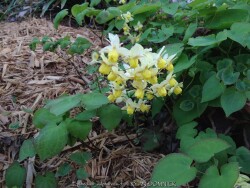

Barrenwort (Epimedium) features compact dainty mounds of green to colored weed-resistant foliage. Wispy flowers appear above emerging foliage in mid-spring. Improved breeding has resulted in many different flower colors even including orange. Semi-evergreen foliage can sometimes look bedraggled by late summer if there is too much overhead watering and humidity. Barrenwort prefers average to dry garden conditions and even thrive and dry shade. Plantings can thrive for decades if in the right spot; there is no such thing as overcrowding for Barrenwort. When planted in mass, growth is slow at first but eventually a cake-like rhizome system will form and completely smother out any weeds and compete well with trees for water and nutrients. While barrenwort can tolerate full sun, they prefer part to full shade. Sun burning is possible with temperatures over 100° and there are better plants to use in hot areas. Due to slow spreading growth, you shouldn't leave very much room in-between barrenwort plants or you will be waiting many years for the patch to fill in. Weeds can be a problem in that open area between plants if spacing is too wide. We recommend 9-12" spacing and use for small nooks in the shade garden. If planning for a larger area, still figure on the tight spacing but allow for a higher budget that you will consider a permanent investment. Barrenwort is a real trooper for the dry shade garden! Epimedium x versicolor 'Sulphureum' is a faster spreading, more robust yellow flowering variety. Albeit still very slow compared to other perennials.


The Zigzag Cactus / Fishbone Cactus, also known as Rhipsalis salicornioides, is a epiphyte jungle cactus native to South America. . It produces thin, flat, succulent leaves that resemble a beer bottle. Originating from a dry climates but not a true desert, it is much more moisture tolerant than a typical derert barrel cactus. Succulents are usually spineless and grown for their beautiful shapes, color and texture. Cacti are known for their spines, unusual shapes and beautiful flowers. Both succulents and cacti store water in their fleshy tissues. And can survive long periods without water. Cacti and succulents are usually grown as a deck/patio plant or house plant in Kansas. Grow in full sun with little to no extra watering except that which comes from rainfall. Generally, plants may be brought out in Late May through Early October in our zone 6a Lawrence, KS climate. To play is safe, potted plants are best moved in before autumn leaves begin to drop and before night temperatures get below 45 degrees F. It is very important to avoid the combination of wet and cold. Move to a bright interior window over the winter with little to no watering and keep above 50 degrees F. As a winter house plant, it will look presentable all winter long with little to no waterings. As a permanent house plant, provide bright light and allow the soil to dry completely between waterings and you will get many years of carefree enjoyment. Plants grown permanently indoors may eventually begin to elongate stretching for light and lose their spine color. It can be hard to reproduce the intense UV sunlight they need when growing indoors so moving outside for the summer is best. Generally if moving outside for the summer, allow 1-2 weeks of part shade or morning sun before placing in full sun. Plants with time to acclimate will thrive in full sun but be careful not to rush it or sunburning may occur. Repotting may or may not be needed depending on how large you want the plant to grow; plants can continue to grow taller and tolerate extremely root-bound pots but may need wind bracing. If repotting, make sure to use a sharp draining low organic cactus mix with plenty of sand and perlite but avoid peat moss. The “soil” most commercial cacti are potted in to too peaty and light weight. This soil becomes hydrophobic and shrinks after becoming bone dry and difficult to re wet again. Cacti never grow in peat-based soils in nature; this “Soil” is only good for shipping because of the light weight. Potted plants are very low maintenance but watch for scale and mealybugs that may hide beneath the cover of spines. The best pest removal approach is to periodically wash the cactus off. Achieve this with a water nozzle or hose breaker turned mostly off to increase the pressure from the blast of water. This high-pressured water kills the pests without damaging the thick cactus skin. Here are some little-known or rare factoids about cacti: 1. The "spines" are actually modified leaves filled with sap at first, then quickly drying out to form the spines! 2. Many cacti have bright colored flowers that mainly attract bees, while some tubular flowering types attract hummingbirds and bats. 3. Late on the evolutionary timeline, cacti fossils are rare to non-existent. Cacti are native almost exclusively to the Americas, while succulents can include a much larger plant palette be from any dry area in the world. 4. Some cactus plants have been known to survive more than 2 years without water. 5. Some cacti first evolved in a dry climate that later became wetter again. For example: several jungle species live as epiphytes in trees to achieve the fast drainage they need.
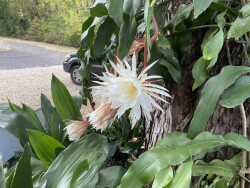

The Queen of the Night / Dutchman's Pipe Cactus, also known as Epiphyllum oxypetalum, is a epiphyte jungle cactus native to South America. It produces thin, flat, succulent winged stems that resemble a flattened paddle. Hanging flowers only open at night and are highly fragrant attracting bats. Originating from a dry climates but not a true desert, it is much more moisture tolerant than a typical derert barrel cactus. Succulents are usually spineless and grown for their beautiful shapes, color and texture. Cacti are known for their spines, unusual shapes and beautiful flowers. Both succulents and cacti store water in their fleshy tissues. And can survive long periods without water. Cacti and succulents are usually grown as a deck/patio plant or house plant in Kansas. Grow in full sun with little to no extra watering except that which comes from rainfall. Generally, plants may be brought out in Late May through Early October in our zone 6a Lawrence, KS climate. To play is safe, potted plants are best moved in before autumn leaves begin to drop and before night temperatures get below 45 degrees F. It is very important to avoid the combination of wet and cold. Move to a bright interior window over the winter with little to no watering and keep above 50 degrees F. As a winter house plant, it will look presentable all winter long with little to no waterings. As a permanent house plant, provide bright light and allow the soil to dry completely between waterings and you will get many years of carefree enjoyment. Plants grown permanently indoors may eventually begin to elongate stretching for light and lose their spine color. It can be hard to reproduce the intense UV sunlight they need when growing indoors so moving outside for the summer is best. Generally if moving outside for the summer, allow 1-2 weeks of part shade or morning sun before placing in full sun. Plants with time to acclimate will thrive in full sun but be careful not to rush it or sunburning may occur. Repotting may or may not be needed depending on how large you want the plant to grow; plants can continue to grow taller and tolerate extremely root-bound pots but may need wind bracing. If repotting, make sure to use a sharp draining low organic cactus mix with plenty of sand and perlite but avoid peat moss. The “soil” most commercial cacti are potted in to too peaty and light weight. This soil becomes hydrophobic and shrinks after becoming bone dry and difficult to re wet again. Cacti never grow in peat-based soils in nature; this “Soil” is only good for shipping because of the light weight. Potted plants are very low maintenance but watch for scale and mealybugs that may hide beneath the cover of spines. The best pest removal approach is to periodically wash the cactus off. Achieve this with a water nozzle or hose breaker turned mostly off to increase the pressure from the blast of water. This high-pressured water kills the pests without damaging the thick cactus skin. Here are some little-known or rare factoids about cacti: 1. The "spines" are actually modified leaves filled with sap at first, then quickly drying out to form the spines! 2. Many cacti have bright colored flowers that mainly attract bees, while some tubular flowering types attract hummingbirds and bats. 3. Late on the evolutionary timeline, cacti fossils are rare to non-existent. Cacti are native almost exclusively to the Americas, while succulents can include a much larger plant palette be from any dry area in the world. 4. Some cactus plants have been known to survive more than 2 years without water. 5. Some cacti first evolved in a dry climate that later became wetter again. For example: several jungle species live as epiphytes in trees to achieve the fast drainage they need.
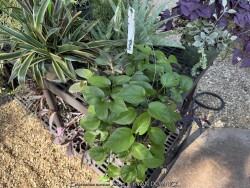

***Description for this plant available with future update!*** Epipremnum aureum 'Jade' is also known as Jade Pothos (Tropical).